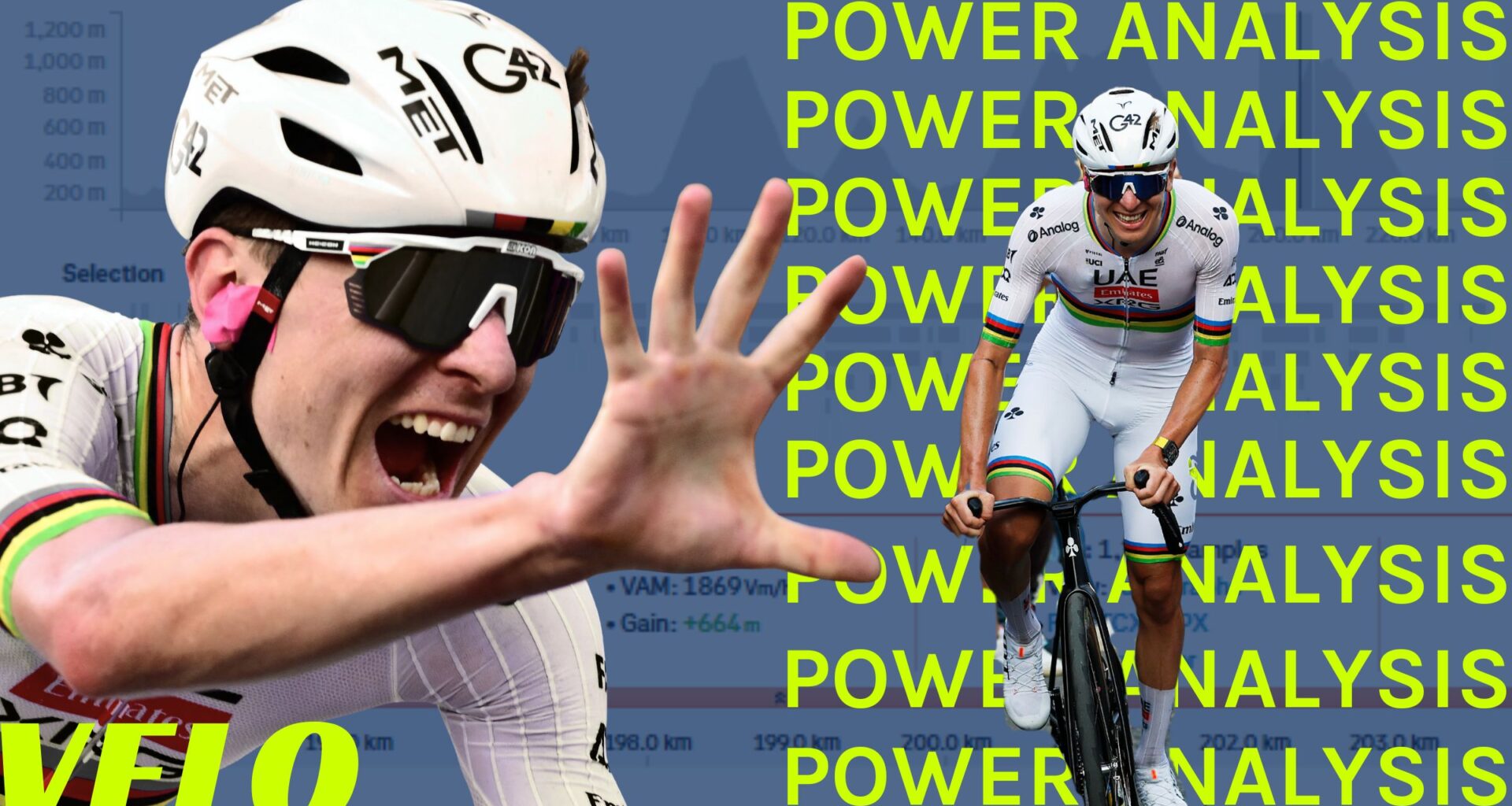Comparing Pogačar’s obliteration of Il Lombardia with his other recent bests shows the peloton has got a serious problem.

(Photo: Getty Images)
Published October 15, 2025 11:15AM
In my last Power Analysis column, I explained how the professional peloton can beat Tadej Pogačar. When it came to the 119th edition of Il Lombardia, they didn’t listen. Any guesses at the outcome? The world champion destroyed them all.
The final monument of the 2025 season made its way from Como to Bergamo along a 241.5km route that included 4,639 meters of climbing. The first 150km were a warmup for the mountainous finale that included the Passo Della Crocetta (11.7km at 5.8%), Passo di Ganda (9.3km at 7.1%), and Colle Aperto (1.3km at 7.4%).
Everyone knew that Pogačar would attack on the Passo di Ganda, which topped out at 31km to go. So what did they do to prepare for the inevitable attack? A few riders had the right idea, such as Quinn Simmons who attacked at kilometer zero. “Captain America” helped form the 14-rider breakaway that stayed out front for the majority of the day.
By the time they reached the finish, Simmons had averaged 357w (NP 390w) for nearly six hours. The craziest part? He didn’t even finish on the podium. The American finished 4th…but let’s rewind to 150km to go.
Red Bull-Bora-Hansgrohe were pacing in the peloton, not UAE Team Emirates-XRG with the overwhelming race favorite in Pogačar. Instead, the team of Primož Roglič were doing the lion’s share of the work. Their best result at the end of the day: 22nd place. But I digress.
The way that the race was playing out, the only way to beat Pogačar was to be far enough ahead at the bottom of Passo di Ganda that you were still within touching distance following the inevitable catch. Simmons was the last survivor of the breakaway, and he began the Passo di Ganda with a 2:45 lead. However, Jay Vine and UAE Team Emirates-XRG began mowing down the American, launching Pogačar from the lead group with a few kilometers to go on the climb.
Simmons’ gap evaporated, and it wasn’t long until Pogačar was solo off the front of Il Lombardia. There wasn’t much else to say over the final 40km. Remco Evenepoel and Michael Storer were the best of the rest on the Passo di Ganda, finishing second and third, respectively, in Bergamo. Simmons held on for 4th, while Isaac Del Toro won the small group sprint for fifth.
Pogačar’s dominance is, of course, utterly impressive. But we’re not here to focus on yet another Pogačar race win. Instead, we’re here to analyze Pogačar’s 2025 season and how he has progressed (or regressed) from previous years.
Il Lombardia
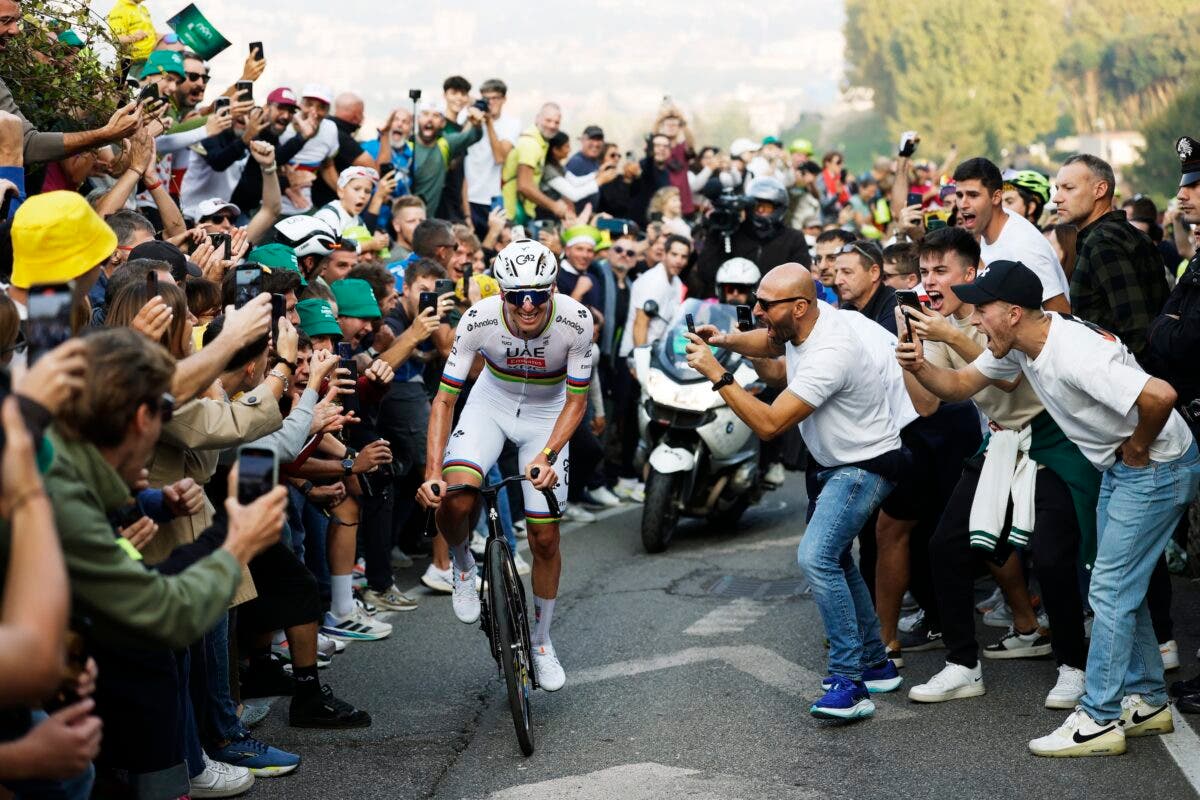 Pogačar blew everyone’s doors off – again – at Il Lombardia. (Photo: Luca Bettini – Pool/Getty Images )
Pogačar blew everyone’s doors off – again – at Il Lombardia. (Photo: Luca Bettini – Pool/Getty Images )
Pogačar’s attack on Passo di Ganda was one of the best climbing performances of his entire career. We’re not joking. Just because he seemed to win so easily doesn’t mean that he wasn’t performing at his best. Before the world champion launched, the pace was already around 7w/kg in the lead group.
Oscar Onley was one of the riders following the UAE Team Emirates-XRG train, and he averaged 6.7w/kg for the first half of the Passo di Ganda. Keep in mind, this was the shallower part of the climb with an average gradient of 6.7%. Onley averaged 26kph during this section of the climb, meaning that he was saving at least 10-20w in the draft.
When Vine finished his pull, Pogačar launched at 950w and rode at 470w for six minutes to blow out his gap. The world champion averaged 390w for the final 49:44 of Il Lombardia, but the normalized power was significantly higher when you factor in the corners, attacks, and descents.
Let’s take a closer look at Pogačar’s effort on the Passo di Ganda.
Best performances of 2025
The climb of Passo di Ganda is Pogačar’s best 20-minute w/kg performance of the season. There were a few comparable performances in the Tour de France, such as his ascents of the Hautacam and Mont Ventoux, but those climbs were significantly longer at 35-55 minutes.
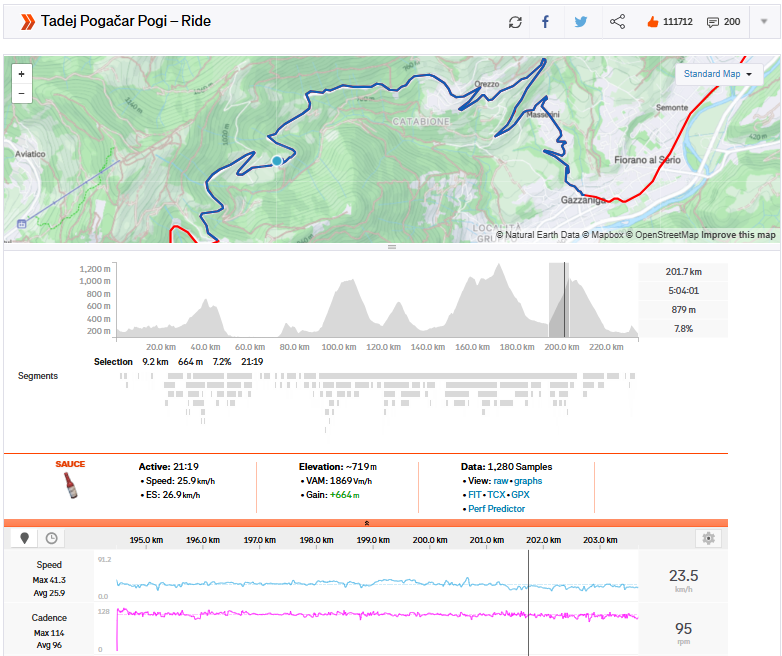
Pogačar – Passo di Ganda
Time: 21:19
Estimated Average Power: ~465w (7.2w/kg)
VAM: 1,869 Vm/h
The Tour’s stage 13 time trial on Peyragudes is the most comparable performance to Pogačar’s Passo di Ganda ascent. But even then, we are talking about a completely fresh effort versus a race-winning attack after 4,500 kJs. The world champion pushed ~7.5w/kg for 17 minutes and 19 seconds on Peyragudes, and an estimated 7.2w/kg for 21 minutes 19 seconds on Passo di Ganda. Pogačar had also crashed a few days before the Peyragudes effort, so it’s unlikely he was 100% for the effort.
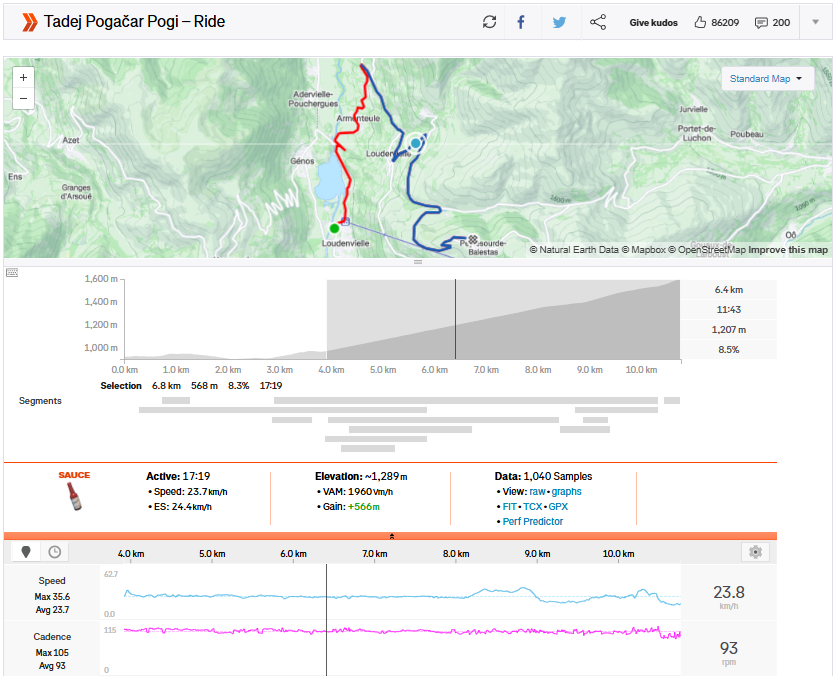
Pogačar – Peyragudes
Time: 17:19
Estimated Average Power: ~475w (7.5w/kg)
VAM: 1,960 Vm/h
It is also worth noting that Pogačar’s effort didn’t finish at the top of Passo di Ganda. He still had 40km to go, and he was able to push 350-400w for the remainder of the race. Of course, this is only a Zone 3 effort for him, but it is still 5.5-6w/kg after 5,000 kJs.
How much Pogačar has improved since 2023
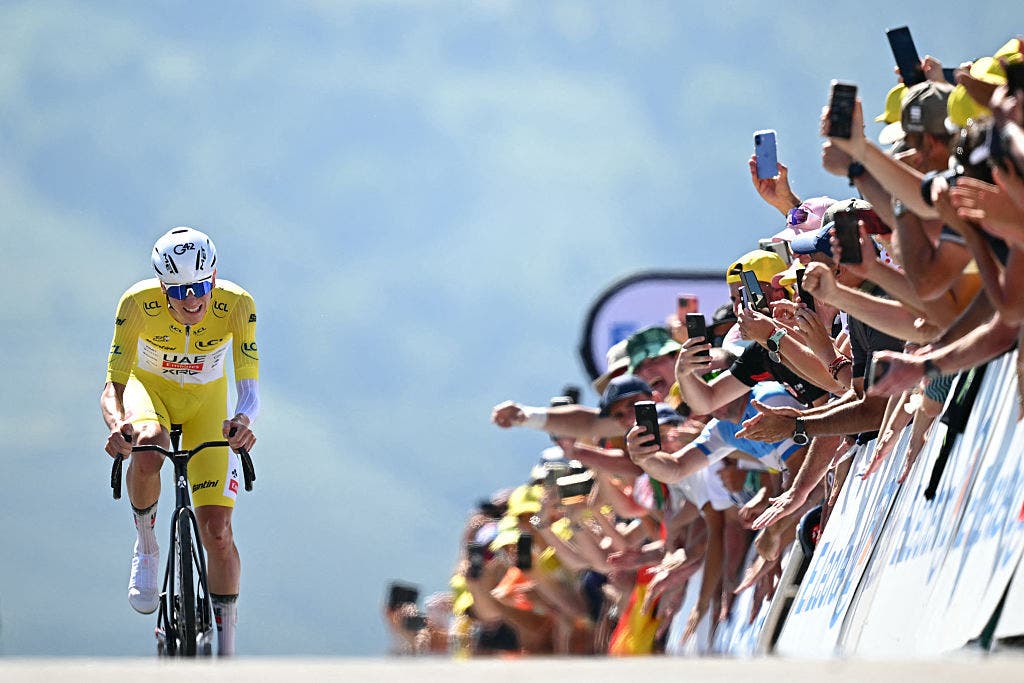 Pogačar ran riot in the Pyrenees at the 2025 Tour de France and could do it again in 2026. (Photo: LOIC VENANCE/AFP via Getty Images )
Pogačar ran riot in the Pyrenees at the 2025 Tour de France and could do it again in 2026. (Photo: LOIC VENANCE/AFP via Getty Images )
The pro peloton doesn’t want to hear this: Pogačar is still improving.
While it’s obvious that he has improved since 2019, we can even see the progress from one year to another. Take 2023 for example, when Pogačar climbed the Passo di Ganda in 23:07. It was an incredibly impressive effort at the time, but it was nearly two minutes slower than this year’s effort.
Even when you account for a possible headwind, equipment differences, and stop-start tactics, a two-minute difference is nearly unfathomable. That is a 9% increase in speed between 2023 and 2025.
Velon published portions of Pogačar’s data last year, including his 48km solo effort to win Il Lombardia. He averaged 340w for just over an hour last year, versus 390w for 50 minutes this year. It is an incredible difference.
What we are seeing is not just the addition of heat training and shorter cranks. Instead, we are seeing the difference that these changes make when they are implemented long-term. That is the key: long-term improvement. You could add heat training to any cyclist’s program and they will probably gain a few watts in the first couple of weeks. But how many watts will they gain when they heat train consistently for 2.5 years? That’s what we are finding out now.
You can apply the same principles to your own training. Take the things that you know work for you. Let’s say it is weekly heat training, VO2 Max intervals, and core work. Don’t just commit to a few weeks of training – commit to a full year. You will make small gains in the first few weeks, but think of how much you can gain in the long term.
Remember that your progress won’t be linear (i.e. you won’t gain 2w on your FTP every single week). It’s much more likely that your progress looks like a staircase. Some weeks you will improve, while others you might stagnate. But when you are consistent with your goals, the progress will always be there in the long-term. Just look at Pogačar’s 2025 season.
He won his fourth Tour de France, but he certainly wasn’t at his best, and he didn’t break any of the performance benchmarks that he set during the 2024 Tour. Pogačar won the Ronde van Vlaanderen and Liège-Bastogne-Liège, but he came up short at Milan-San Remo and Paris-Roubaix.
Even at the UCI Road World Championships, Pogačar didn’t look his best when he failed to reach the podium in the time trial. But he didn’t let that performance keep him down. A few days later, he dominated the road race to earn his second consecutive rainbow jersey.
Power Analysis data courtesy of Strava
Riders:
Tadej Pogačar
Oscar Onley
Quinn Simmons

